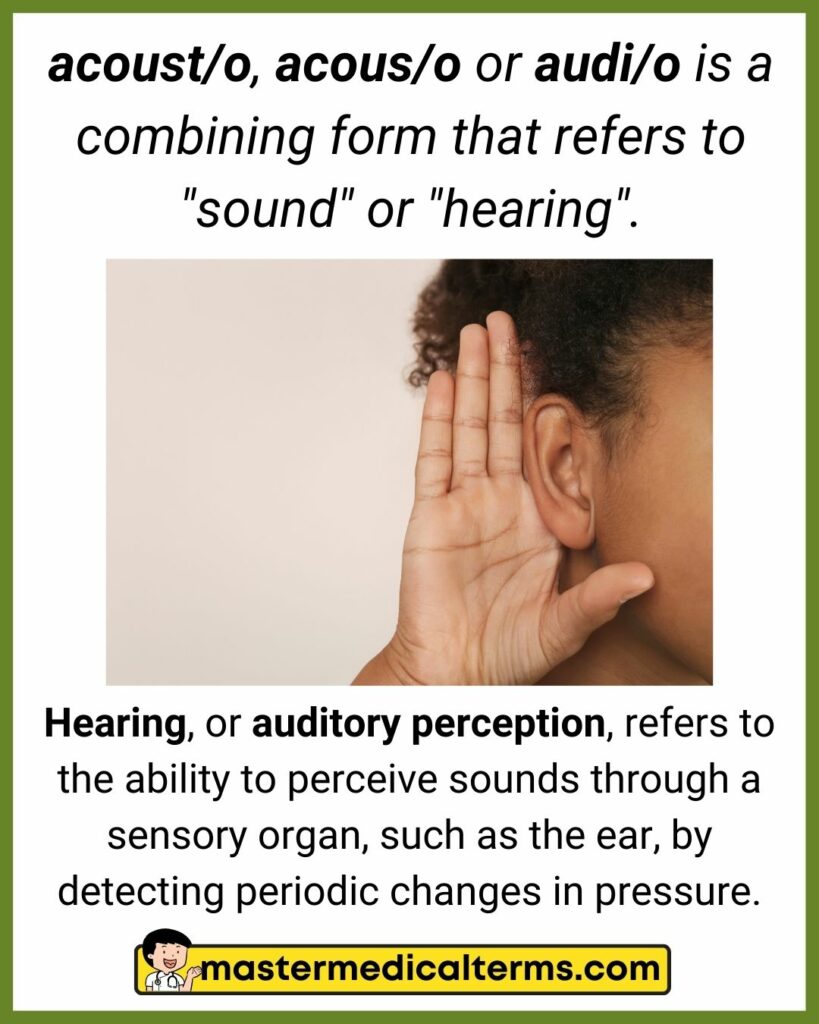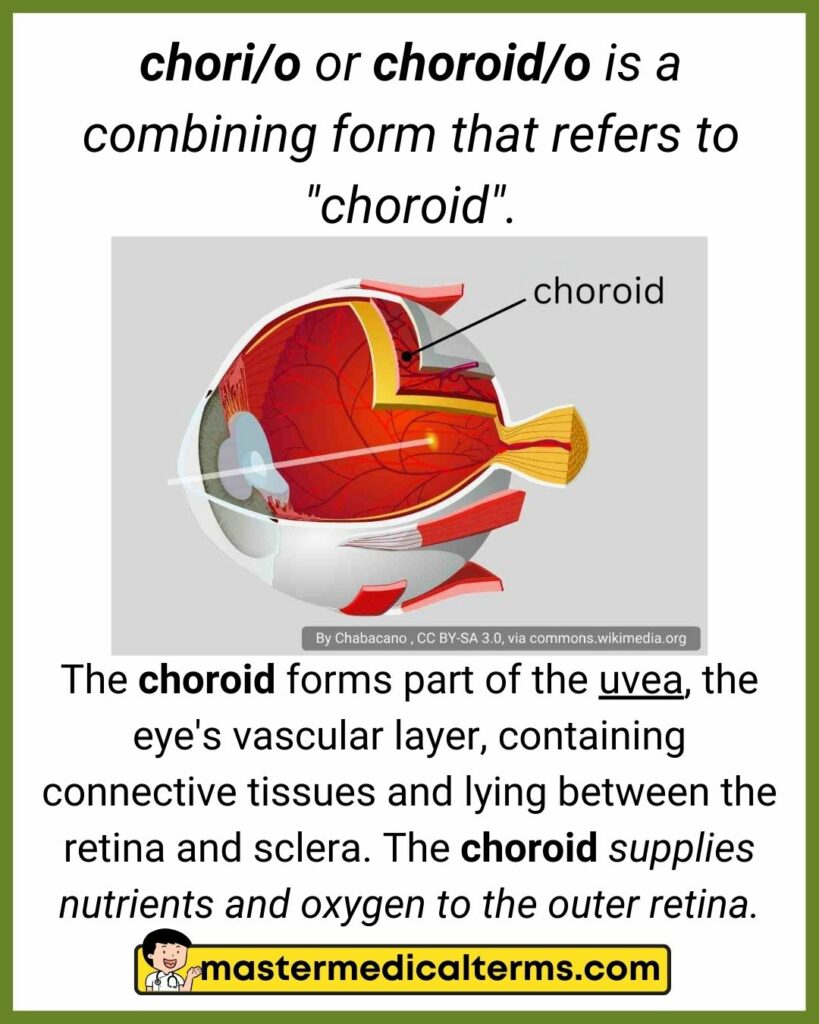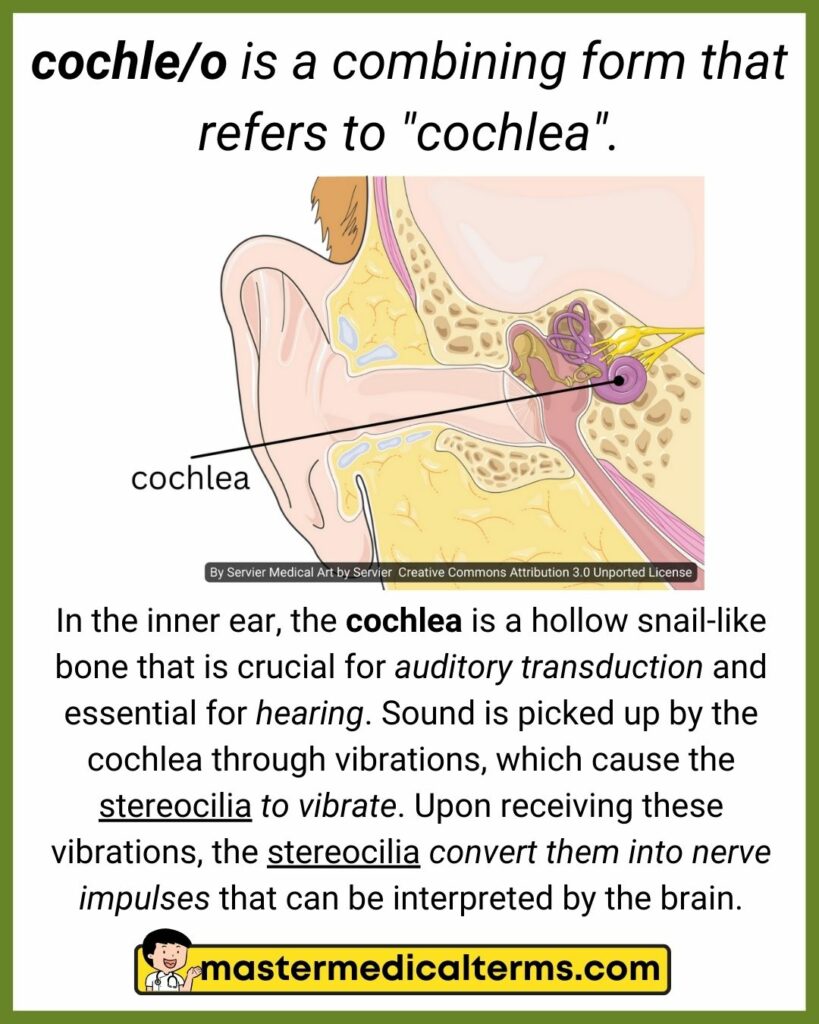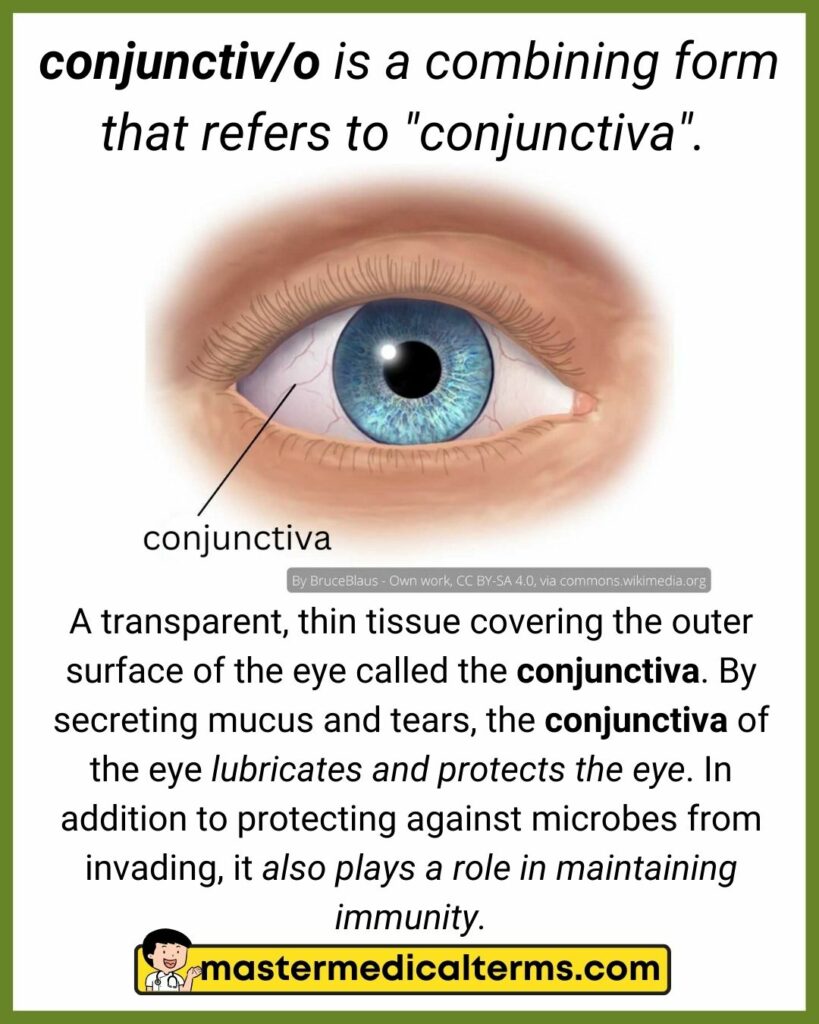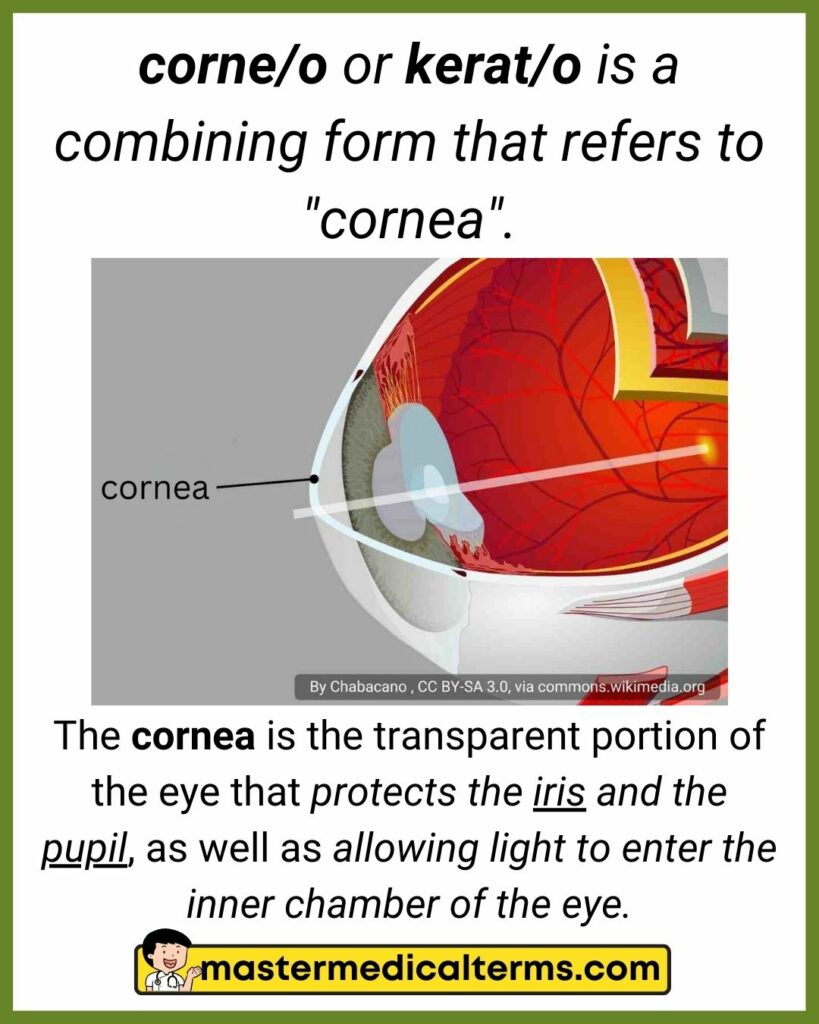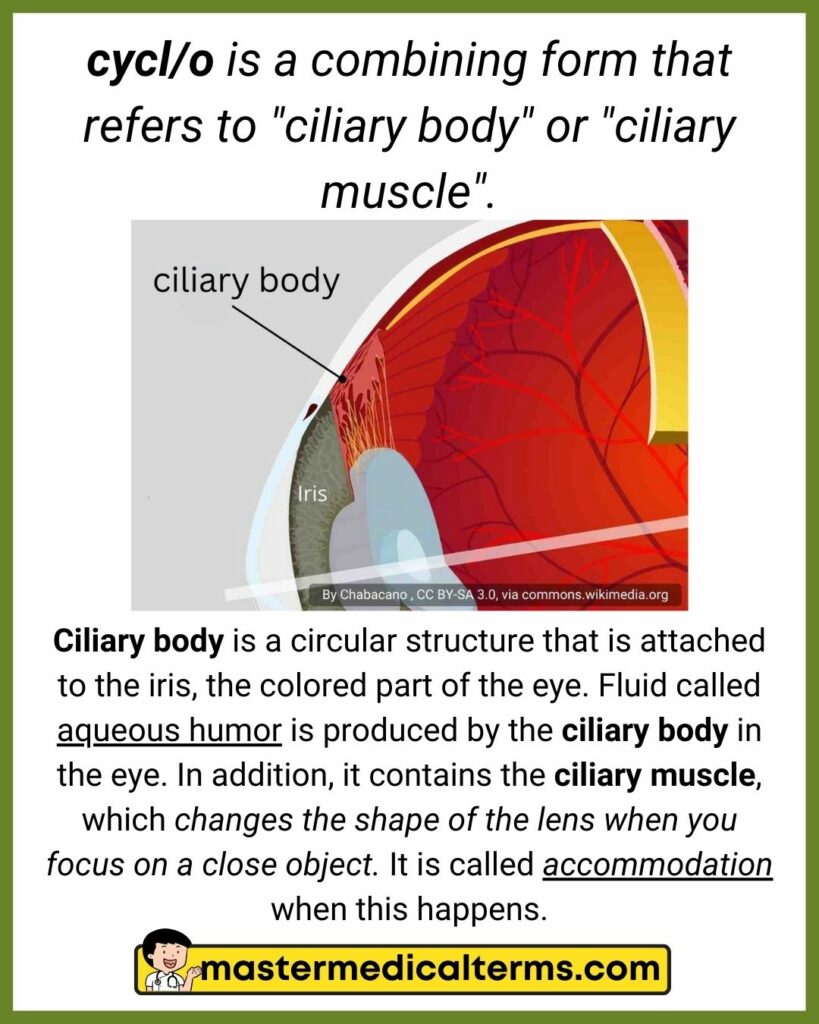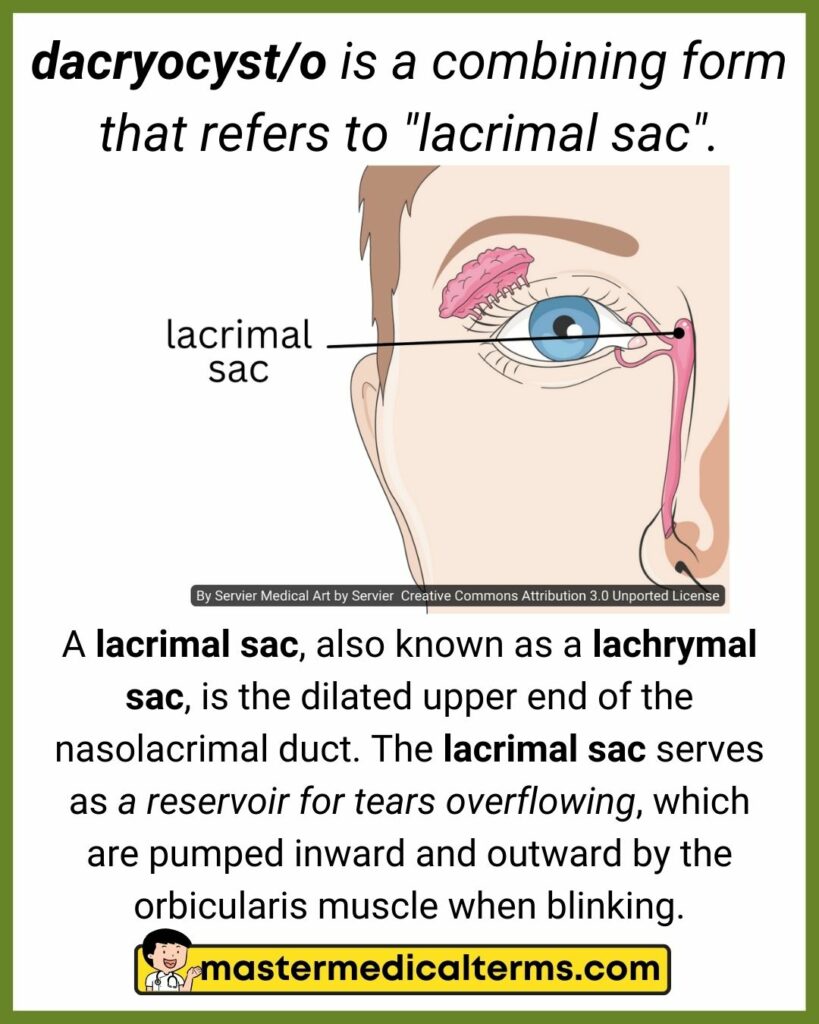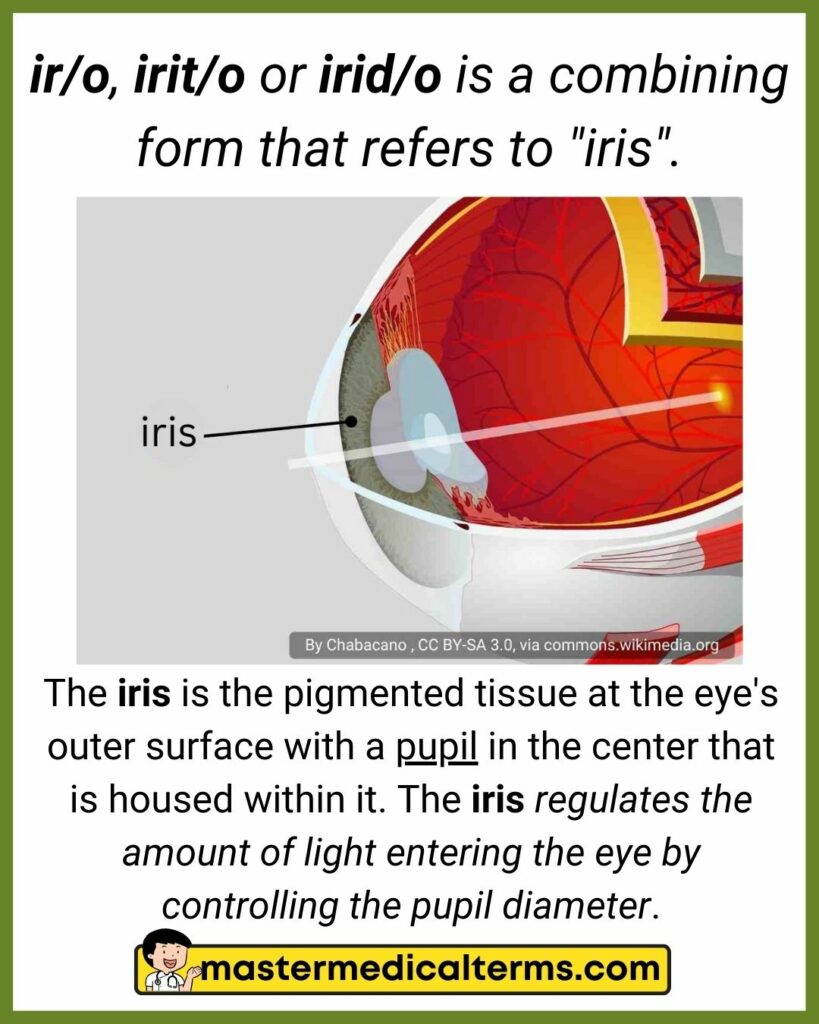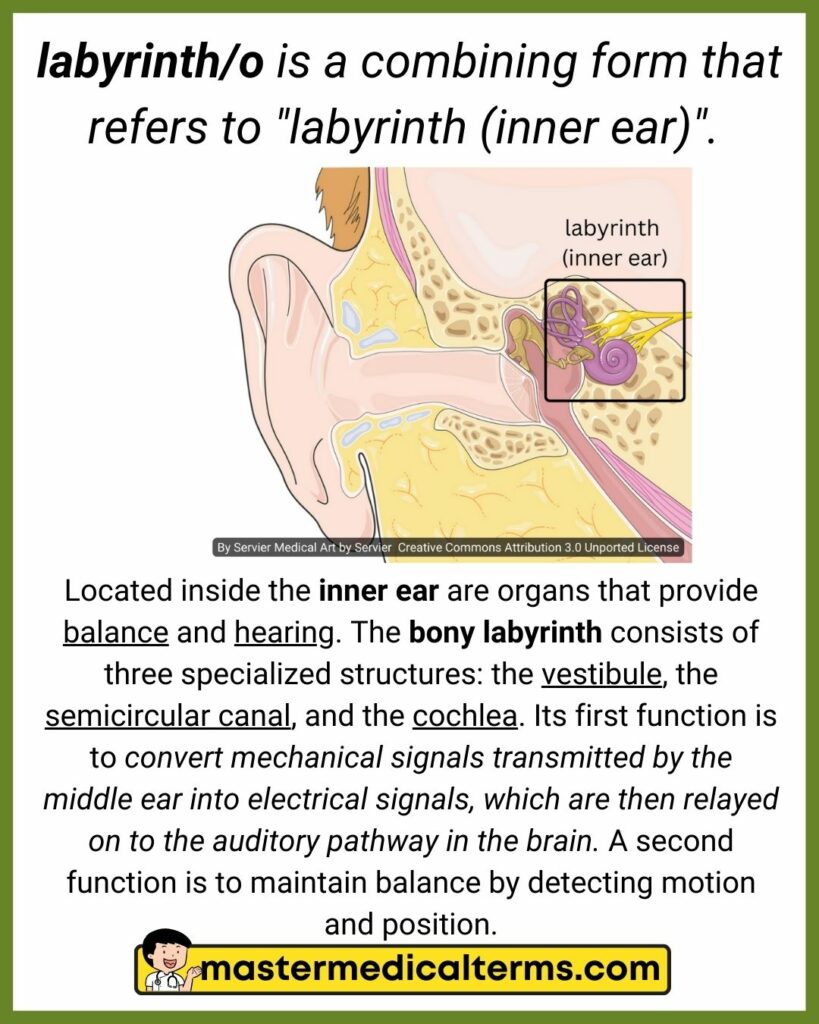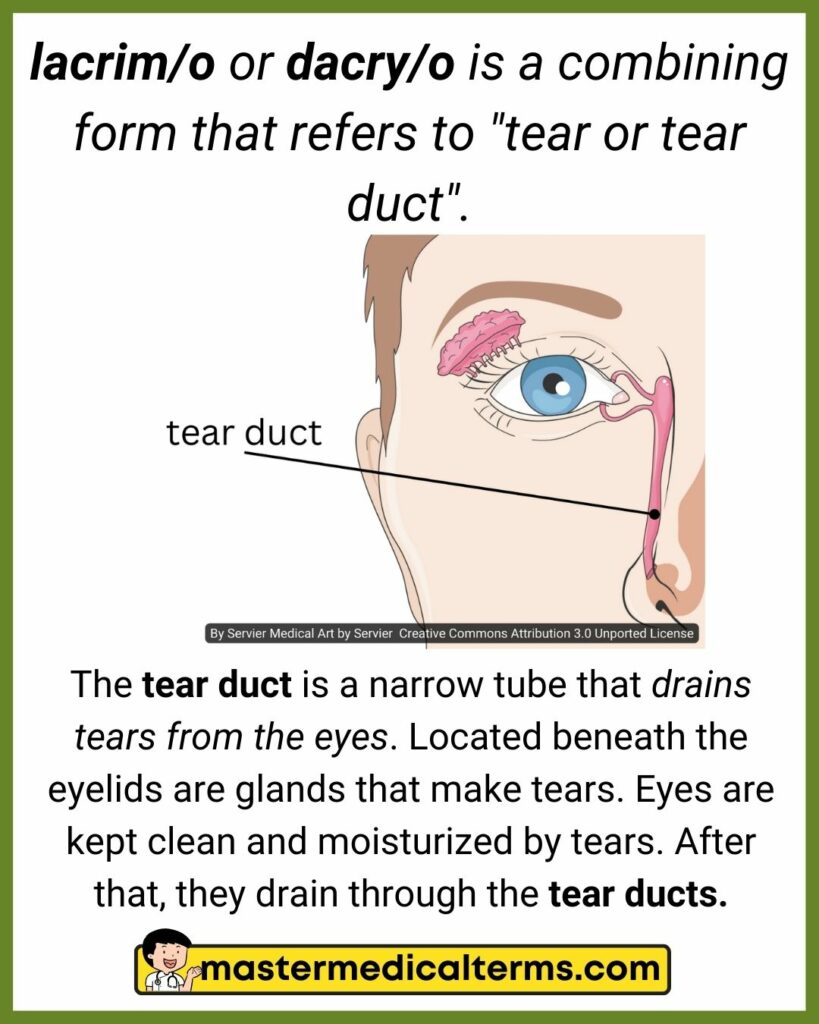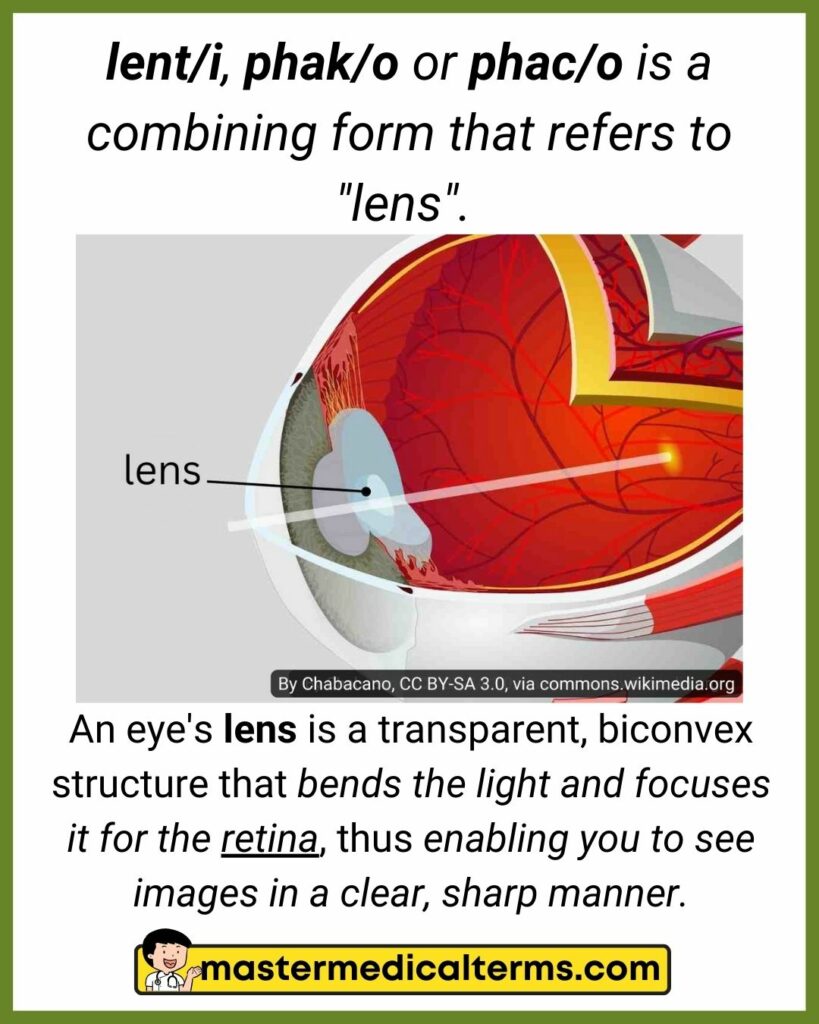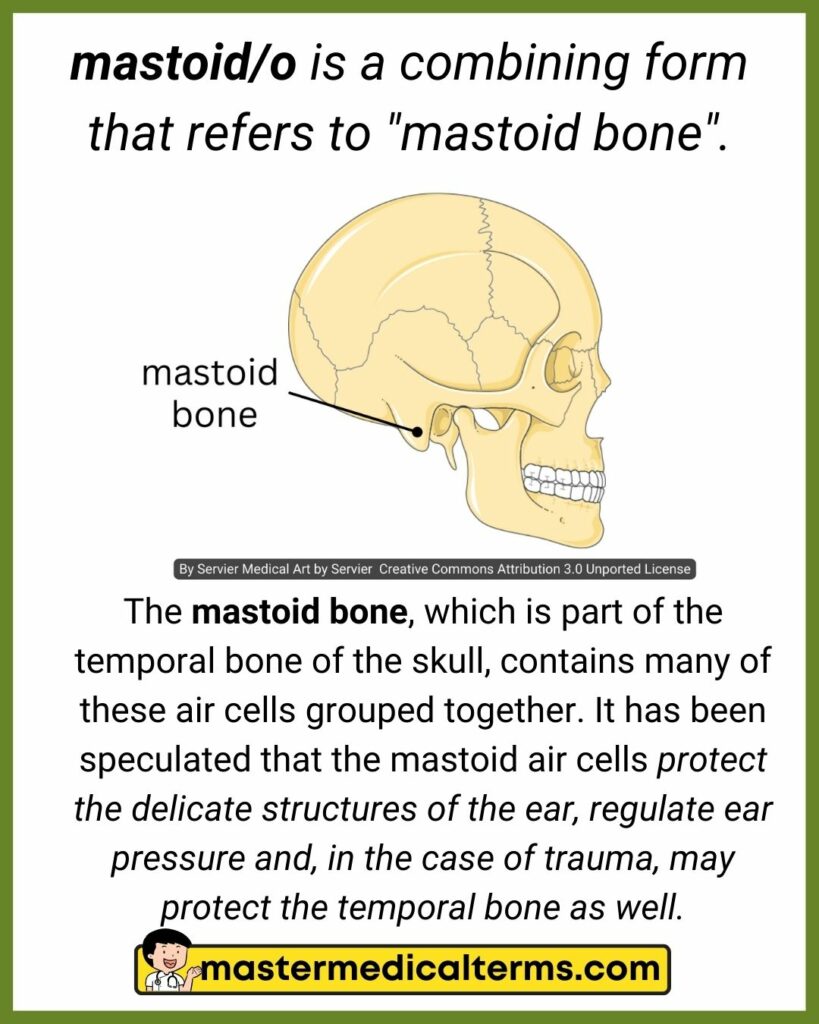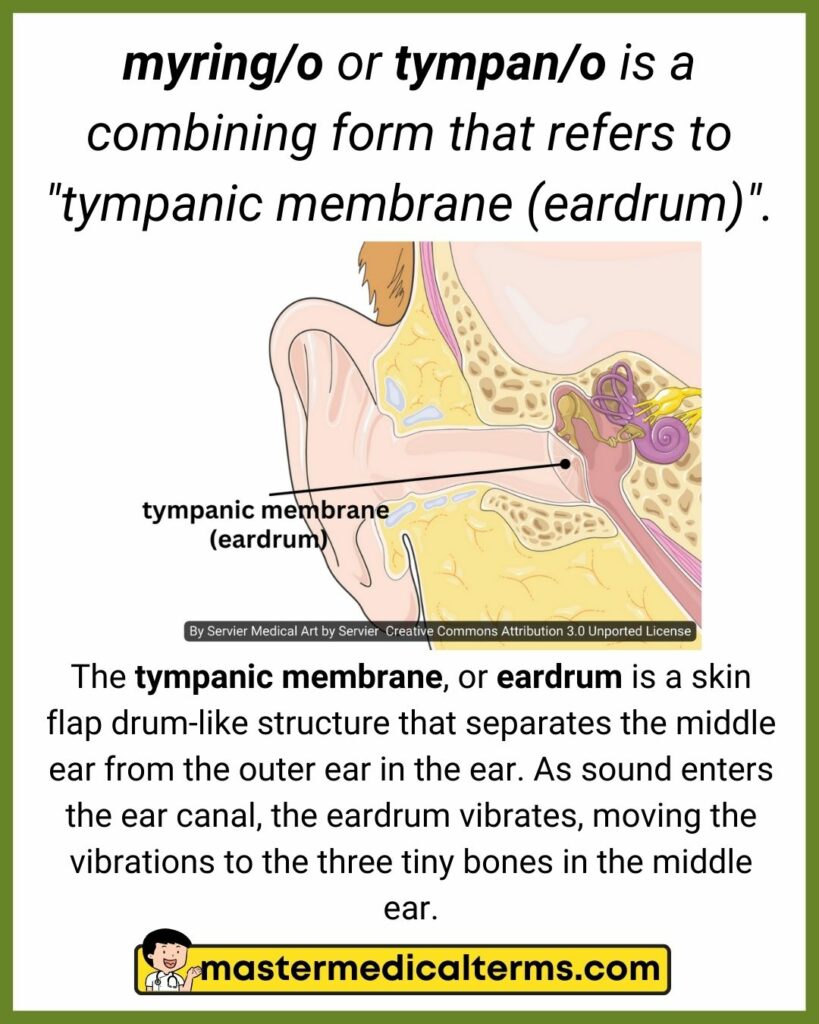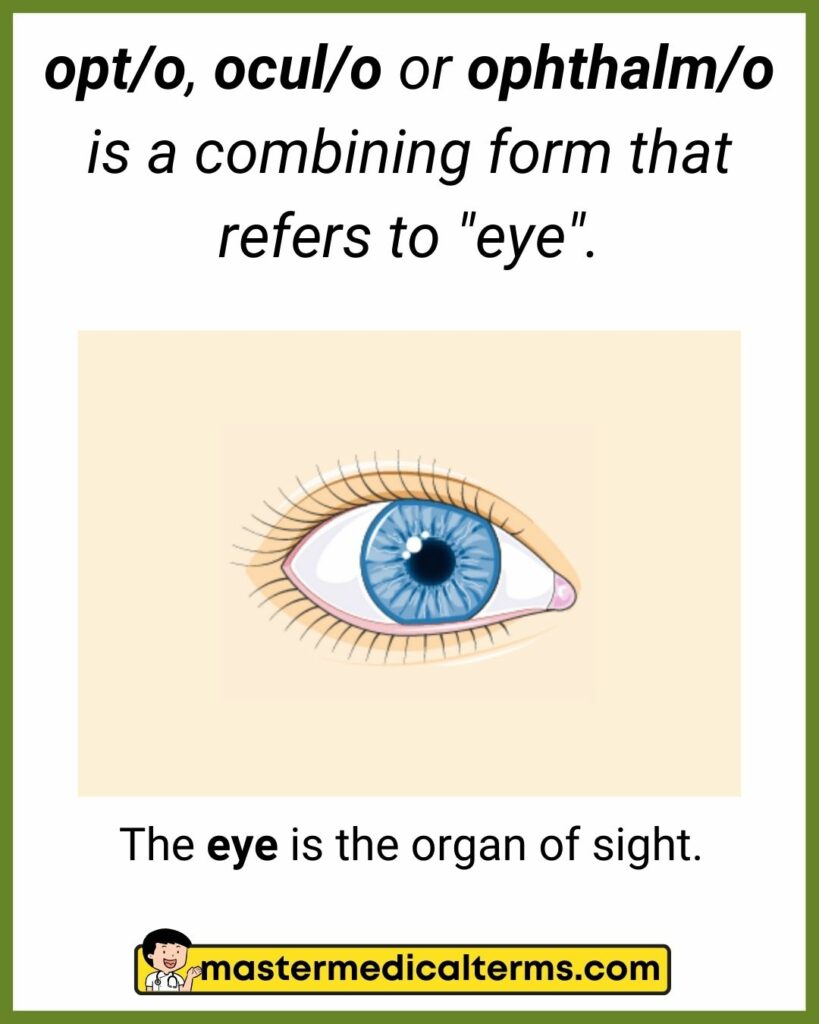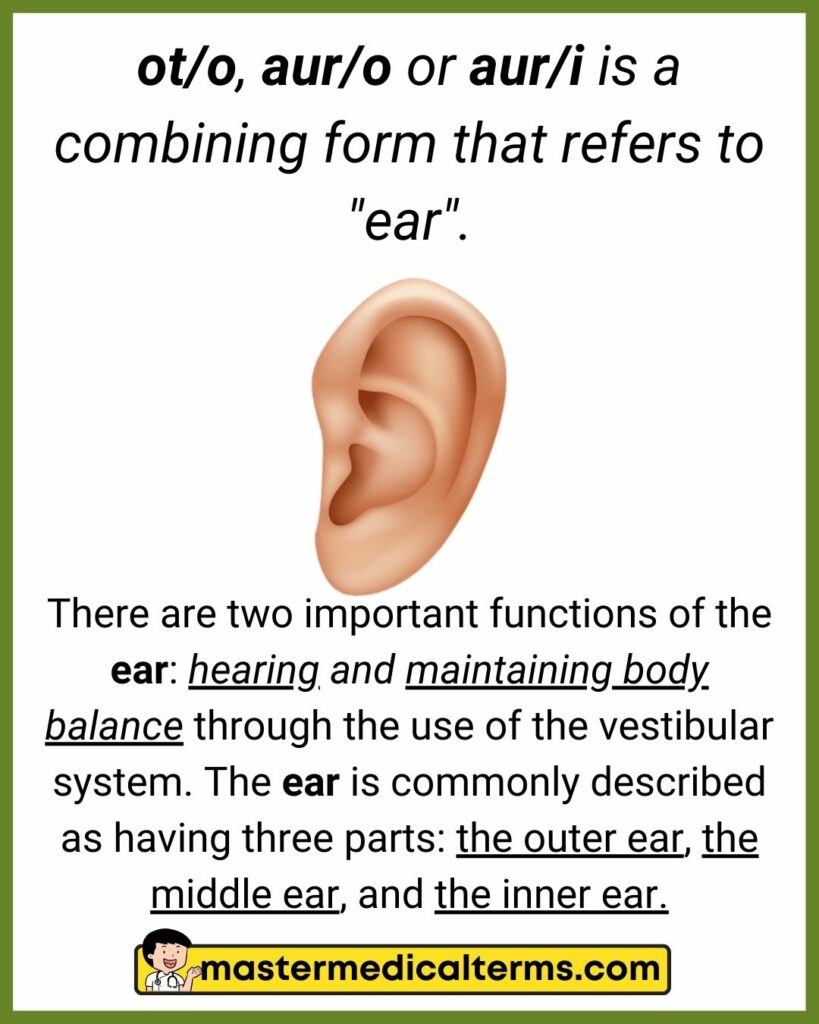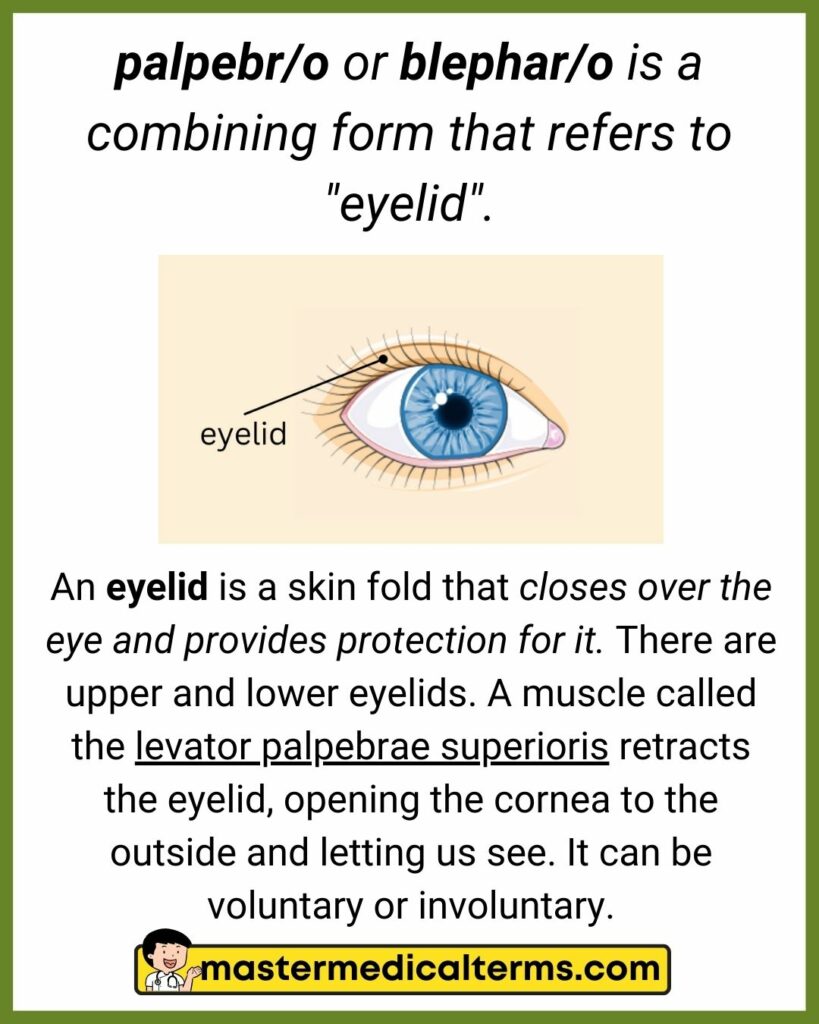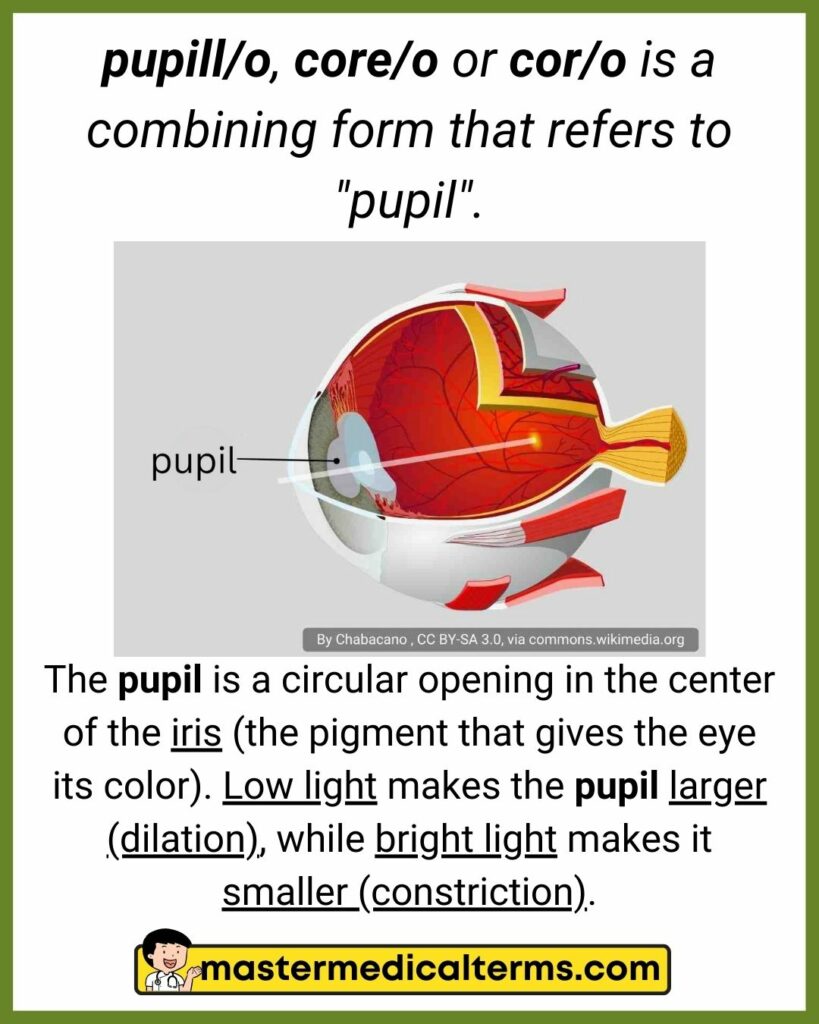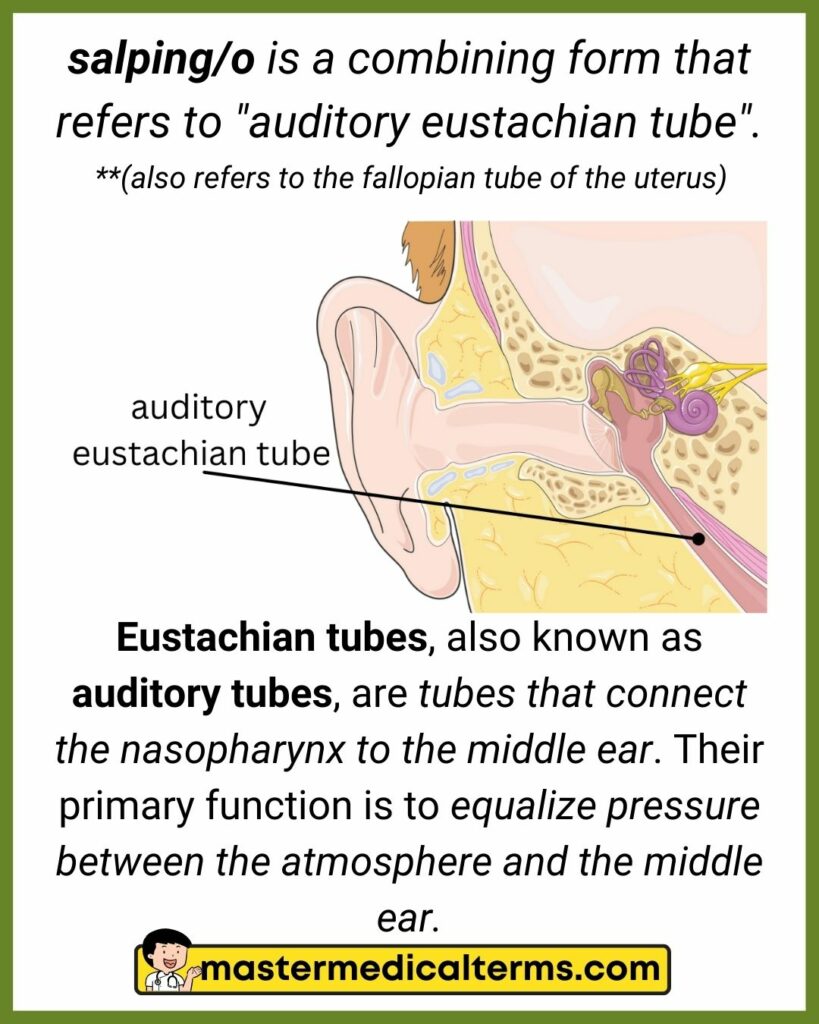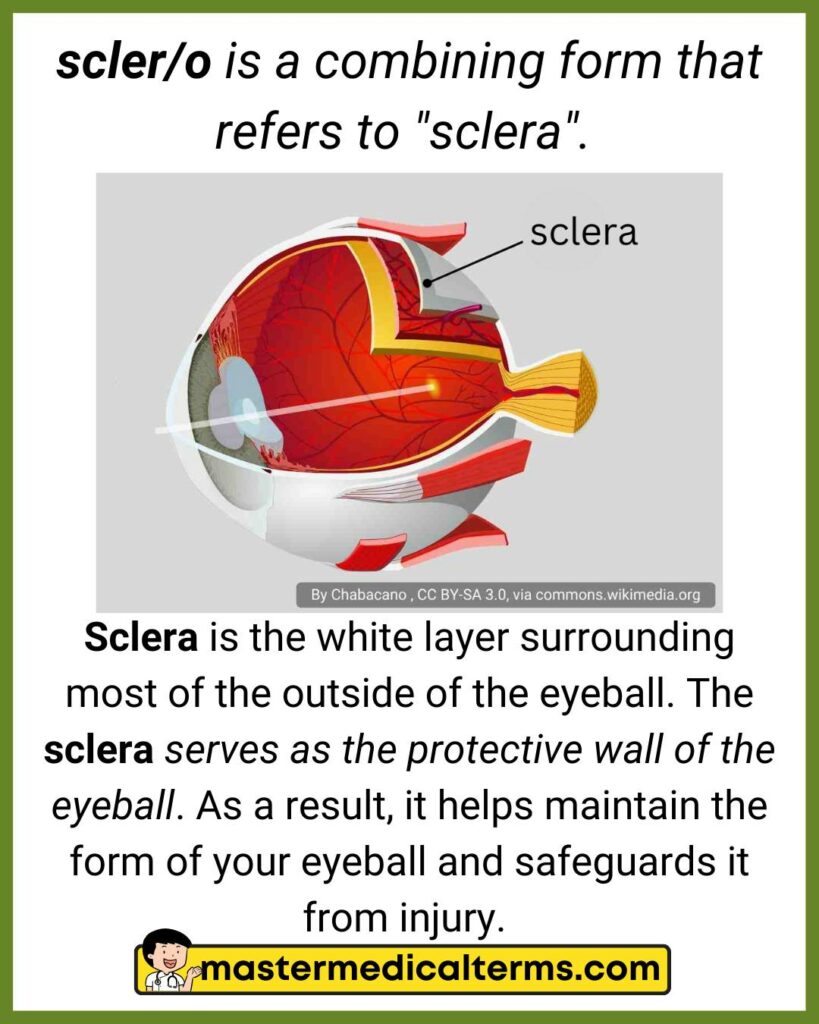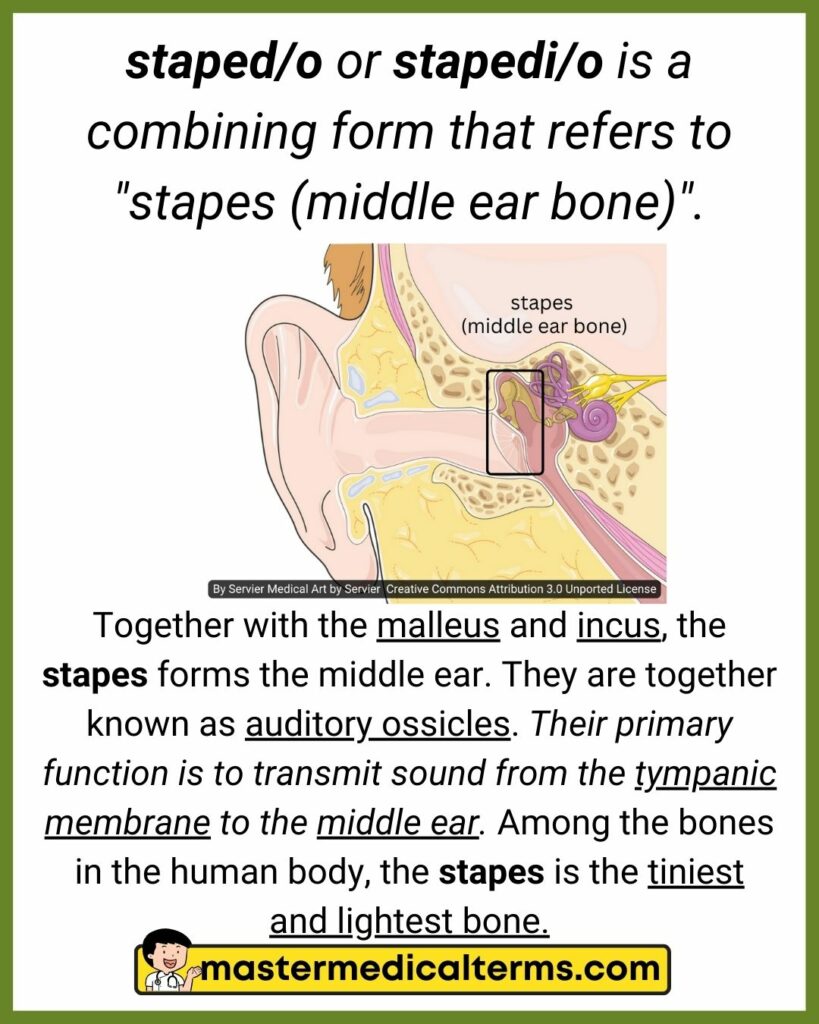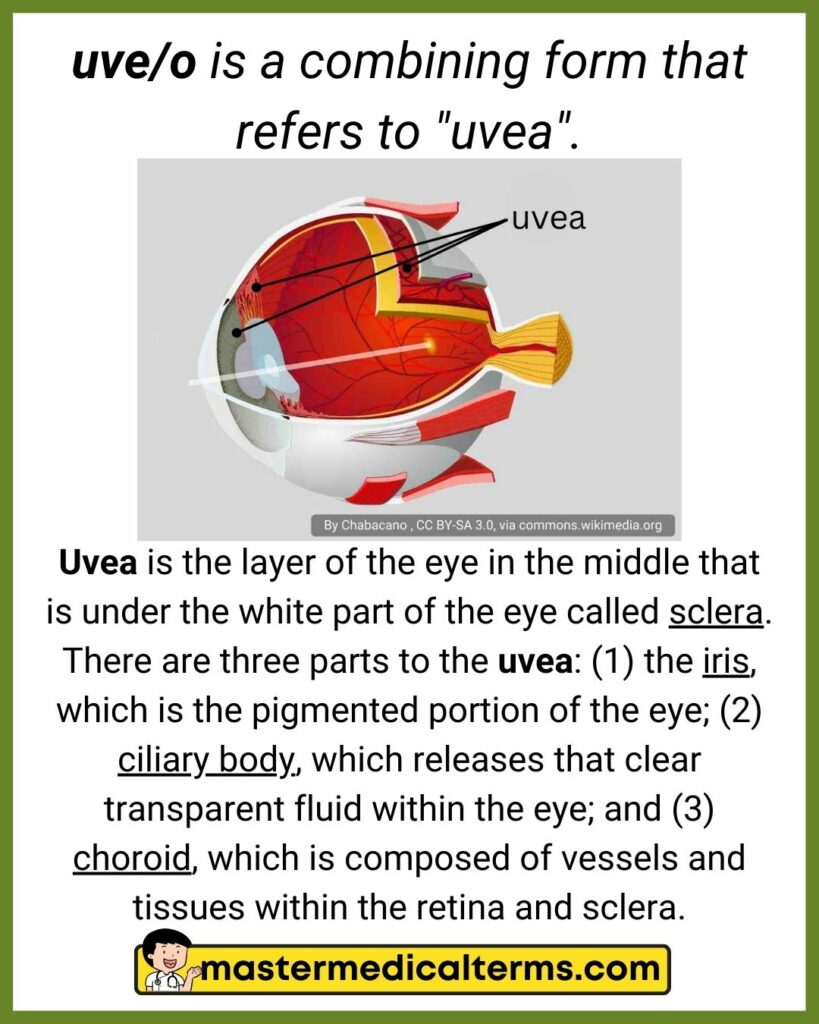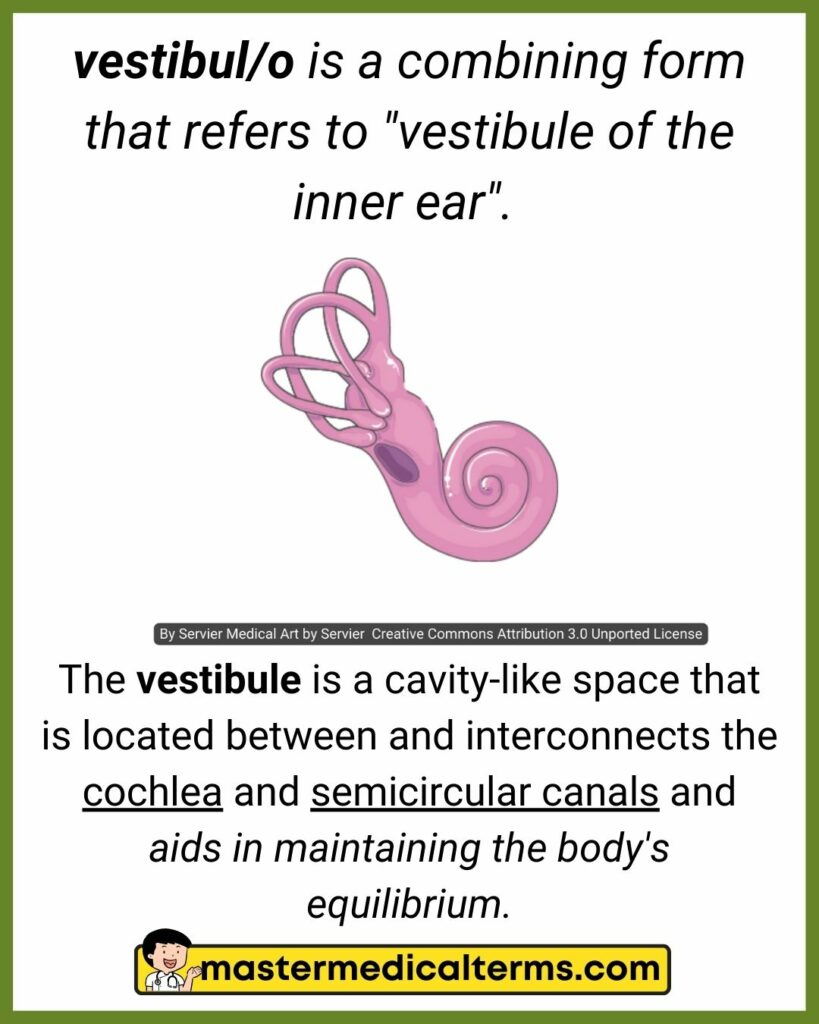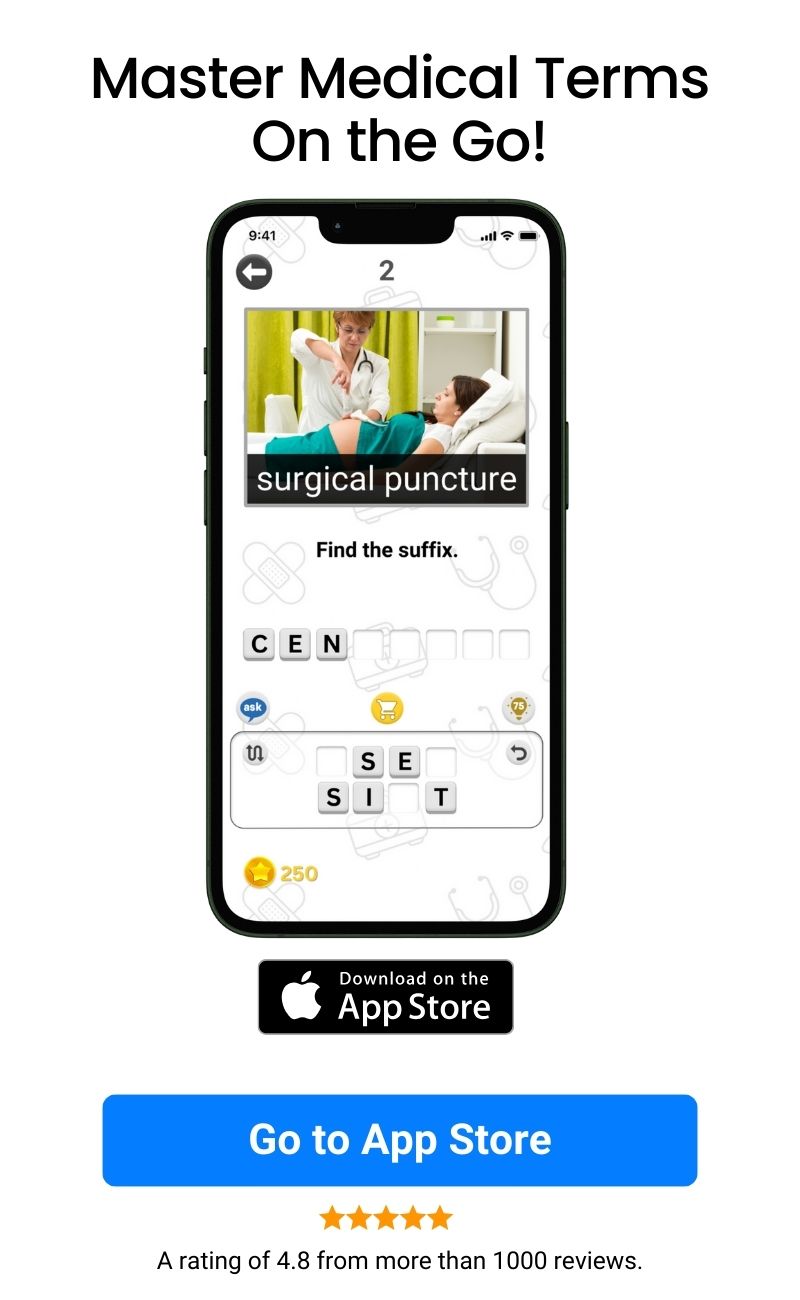Utilizing this flashcard review list, you will become familiar with and better comprehend the root words and combining forms associated with the sensory system.
Check out the quiz version of this flashcard if you want to see how much you remember.
#1 acoust/o, acous/o, audi/o
#2 chori/o, choroid/o
#3 cochle/o
cochle/o is a combining form that refers to "cochlea".
In the inner ear, the cochlea is a hollow snail-like bone that is crucial for auditory transduction and essential for hearing. Sound is picked up by the cochlea through vibrations, which cause the stereocilia to vibrate. Upon receiving these vibrations, the stereocilia convert them into nerve impulses that can be interpreted by the brain.
#4 conjunctiv/o
conjunctiv/o is a combining form that refers to "conjunctiva".
A transparent, thin tissue covering the outer surface of the eye called the conjunctiva. By secreting mucus and tears, the conjunctiva of the eye lubricates and protects the eye. In addition to protecting against microbes from invading, it also plays a role in maintaining immunity.
#5 corne/o, kerat/o
corne/o or kerat/o is a combining form that refers to "cornea" or "thorn".
The cornea is the transparent portion of the eye that protects the iris and the pupil, as well as allowing light to enter the inner chamber of the eye.
Examples of Medical Terms Containing corne/o and kerat/o
Corneal: corne ( "cornea") + -al ( "pertaining to")
Definition: Pertaining to the cornea, the clear front part of the eye that covers the iris, pupil, and anterior chamber.
Corneal ulcer: corne ( "cornea") + -al ( "pertaining to") + [ulcer ( "a sore on the skin or mucous membrane")]
Definition: A sore on the surface of the cornea that can cause pain, redness, and decreased vision.
Corneal transplant: corne ( "cornea") + -al ( "pertaining to") + [transplant ( "an organ or tissue is transferred from one body to another")]
Definition: Surgery to remove a damaged or diseased cornea and replace it with a healthy one from a donor.
Corneal abrasion: corne ( "cornea") + -al ( "pertaining to") + [abrasion ( "a scrape or scratch on the skin")]
Definition: A scrape or scratch on the surface of the cornea, which can cause pain, redness, and decreased vision.
Corneal dystrophy: corne ( "cornea") + -al ( "pertaining to") + [dystrophy ( "a disorder of growth or development")]
Definition: A genetic disorder that affects the cornea, leading to cloudy or distorted vision.
Keratitis: kerat ( "cornea") + -itis ( "inflammation")
Definition: Inflammation of the cornea, the clear front part of the eye that covers the iris, pupil, and anterior chamber.
Keratoconus: kerat ( "cornea") + -conus ( "cone-shaped")
Definition: A condition in which the cornea (the clear front part of the eye) thins and becomes cone-shaped, resulting in blurred vision and light sensitivity.
Keratoderma: kerat ( "thorny; keratinous substance") + -derma ( "skin")
Definition: A skin condition characterized by thickened, scaly patches on the palms of the hands and soles of the feet.
Keratolysis: kerat ( "thorny; keratinous substance") + -lysis ( "dissolution" or "breakdown")
Definition: The breakdown or dissolution of the keratin in the skin, which can cause the formation of blisters or erosions.
Keratoma: kerat ( "thorny; keratinous substance") + -oma ( "tumor")
Definition: A benign tumor of the skin or nails that is made up of cells that produce keratin.
#6 cycl/o
cycl/o is a combining form that refers to "ciliary body" or "ciliary muscle".
Ciliary body is a circular structure that is attached to the iris, the colored part of the eye. Fluid called aqueous humor is produced by the ciliary body in the eye. In addition, it contains the ciliary muscle, which changes the shape of the lens when you focus on a close object. It is called accommodation when this happens.
#7 dacryocyst/o
dacryocyst/o is a combining form that refers to "lacrimal sac".
A lacrimal sac, also known as a lachrymal sac, is the dilated upper end of the nasolacrimal duct. The lacrimal sac serves as a reservoir for tears overflowing, which are pumped inward and outward by the orbicularis muscle when blinking.
#8 ir/o, irit/o, irid/o
#9 labyrinth/o
labyrinth/o is a combining form that refers to "labyrinth (inner ear)".
Located inside the inner ear are organs that provide balance and hearing. The bony labyrinth consists of three specialized structures: the vestibule, the semicircular canal, and the cochlea. Its first function is to convert mechanical signals transmitted by the middle ear into electrical signals, which are then relayed on to the auditory pathway in the brain. A second function is to maintain balance by detecting motion and position.
#10 lacrim/o, dacry/o
#11 lent/i, phak/o, phac/o
#12 mastoid/o
mastoid/o is a combining form that refers to "mastoid bone".
The mastoid bone, which is part of the temporal bone of the skull, contains many of these air cells grouped together. It has been speculated that the mastoid air cells protect the delicate structures of the ear, regulate ear pressure and, in the case of trauma, may protect the temporal bone as well.
#13 myring/o, tympan/o
myring/o or tympan/o is a combining form that refers to "tympanic membrane (eardrum)".
The tympanic membrane, or eardrum is a skin flap drum-like structure that separates the middle ear from the outer ear in the ear. As sound enters the ear canal, the eardrum vibrates, moving the vibrations to the three tiny bones in the middle ear.
#14 opt/o, ocul/o, ophthalm/o
#15 ot/o, aur/o, aur/i
#16 palpebr/o, blephar/o
palpebr/o or blephar/o is a combining form that refers to "eyelid".
An eyelid is a skin fold that closes over the eye and provides protection for it. There are upper and lower eyelids. A muscle called the levator palpebrae superioris retracts the eyelid, opening the cornea to the outside and letting us see. It can be voluntary or involuntary.
#17 phot/o
#18 pupill/o, core/o, cor/o
#19 retin/o
retin/o is a combining form that refers to "retina".
An eye's retina is a layered structure located at the back of the eye. The retina converts light passing through the eye into electrical signals. Millions of light-sensitive cells (rods and cones) and nerve cells are found within the retina. Through the optic nerve, your retina transmits this information to your brain, which is what allows you to see.
#20 salping/o
salping/o is a combining form that refers to "auditory eustachian tube". (**Note: also refers to the fallopian tube of the uterus.)
Eustachian tubes, also known as auditory tubes, are tubes that connect the nasopharynx to the middle ear. Their primary function is to equalize pressure between the atmosphere and the middle ear.
#21 scler/o
#22 staped/o, stapedi/o
staped/o or stapedi/o is a combining form that refers to "stapes (middle ear bone)".
Together with the malleus and incus, the stapes forms the middle ear. They are together known as auditory ossicles. Their primary function is to transmit sound from the tympanic membrane to the middle ear. Among the bones in the human body, the stapes is the tiniest and lightest bone.
#23 uve/o
uve/o is a combining form that refers to "uvea".
Uvea is the layer of the eye in the middle that is under the white part of the eye called sclera. There are three parts to the uvea: (1) the iris, which is the pigmented portion of the eye; (2) ciliary body, which releases that clear transparent fluid within the eye; and (3) choroid, which is composed of vessels and tissues within the retina and sclera.


